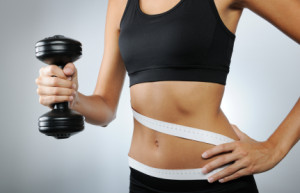- Calls to this hotline are currently being directed to Within Health or Eating Disorder Solutions
- Representatives are standing by 24/7 to help answer your questions
- All calls are confidential and HIPAA compliant
- There is no obligation or cost to call
- Eating Disorder Hope does not receive any commissions or fees dependent upon which provider you select
- Additional treatment providers are located on our directory or samhsa.gov
Athletes and Body Image Issues
The Truth Behind Athletes and Body Image Issues
Sport is a microcosm of society. That is, what we see in society, we will likely see in sport, including body image issues.
Unfortunately, those issues tend to be more complex and conflicted for athletes, especially female athletes, than for the general population.
Athletes have the same risk factors as non-athletes, but they also have risk factors unique to the sport environment or to a particular sport (Thompson & Sherman, 2010).
Athletes and Body Image Issues With All Forms of Pressure
Recent research suggests that athletes have two body images—one in sport and one outside of sport (De Bruin et al., 2011; Krane et al., 2001; Lowland, 1999; Russell, 2004). Thus, they are at risk in either or both contexts. In The Victory Program at McCallum Place, we have found our athletes to experience body image issues in one or both contexts.
Athletes must deal with “competitive thinness” issues and tend to make unhealthy body comparisons in both the sport and societal environments (Thompson & Sherman, 2010). Most of these comparisons within the sport will be made with teammates but could also involve competitors. The same kinds of “fat talk” that occur among girls and young women outside of sport occur within the sport environment.
Although considerable weight and body image pressure stems from coaches, recent research suggests that weight and body image pressures from teammates may be greater (Anderson et al., 2011, 2012; Reel et al., 2010). Research with male athletes suggests that these pressures are not solely the province of female athletes (Galli et al., 2013).
Lean or Non-Lean Athletes
Another factor for athletes that tends to exacerbate body image concerns is the conflict many feel when making their bodies more muscular through sport specific weight training. Although the stronger, more muscular body can facilitate sport performance, some female athletes feel that it is a disadvantage with regard to attaining/maintaining society’s thin ideal (Krane et al., 2004; Steinfeldt et al., 2011; Steinfeldt et al., 2013).
Such concerns more often occur in the so-called “non-lean” sports, which essentially include any sport that is not an aesthetic (i.e., gymnastics, diving, figure skating, etc.), endurance (i.e., distance running, cycling, triathlon, etc.), or weight class (i.e., wrestling, lightweight rowing, martial arts, etc.) sport.
Regarding “lean” vs. “non-lean” sports, research suggests that although the prevalence of disordered eating/eating disorders is higher among lean sport athletes, many lean sport athletes are not dissatisfied with their bodies.
This suggests that their attempts to decrease body weight or body fat is related to the demands of their sport or coach (De Bruin et al., 2007). On the other hand, while the prevalence of disordered eating/eating disorders is lower in non-lean athletes than in their lean sport counterparts, body dissatisfaction and the use of pathogenic weight loss methods tends to be higher among non-lean sport athletes as compared to the lean sport athletes (Torstveit et al., 2008).
The Uniform Dilemma
An additional factor that can affect body image in athletes relates to revealing sport attire (Reel et al., 2010, 2013; Steinfeldt et al., 2013).
This issue primarily affects sportswomen, although recent research suggests that some male athletes may be affected as well (Galli et al., 2013).
A uniform can be “revealing” based on the amount of skin revealed or how tightly the uniform conforms to the body.
Such a uniform can increase body consciousness and body dissatisfaction, which in turn can increase the risk of unhealthy dieting and disordered eating symptoms. Purely from a sport performance perspective, these uniforms can also distract the athlete, affecting sport performance (Steinfeldt et al., 2013).
As mentioned previously, sport is a microcosm of society. In that regard, we see not only body image issues and eating disorders in sport; we also see what appears to be sexism or even sexploitation regarding the revealing nature of the uniforms for female athletes (Thompson & Sherman, 2010), but the issues is not consistent in sport.
For example, in sports like swimming and diving, male and female athletes wear revealing suits. The fact that both genders wear revealing uniforms suggests a “functional” rationale for the suits; that is, they facilitate performance, such as reducing drag in the water.
However, in many sports (i.e., track and field, volleyball, beach volleyball, etc.), the uniforms for women are more revealing than those for men in the same sport, suggesting that the issue is not one of functionality.
Rather, it appears to be related to sexism or even sexploitation in an effort to increase attendance and/or obtain financially lucrative endorsements.
Such uniforms not only increase the risk of disordered eating, but they also facilitate unhealthy body comparisons (Thompson & Sherman, 2010). They may even affect whether a young girl chooses to participate in sport.
Girls have reported that they have opted not to participate in a particular sport because of what they would have to wear (i.e., short, tight spandex in volleyball, “bun huggers” in track, etc.).
One of the positives about sport is that it provides girls and young women with an opportunity to engage in healthy competition with other females in a way that has nothing to do with weight or physical attractiveness. However, we must deal effectively with these uniform issues in order to protect that opportunity.
Click here to see the specific dangers associated with female athletes
Talk With Someone Today
In conclusion, athletes, especially female athletes, are more at risk for body image problems and eating disorders than the general population. For that reason, they need specialized approaches to identification, management, treatment, and prevention.
When possible, they should be in treatment with healthcare providers with experience in treating eating disorders and athletes, but who also understand and accept the importance of sport in the life of a serious athlete.
References
- Anderson, C.M., Petrie, T.A., & Neumann, C. (2011). Psychosocial correlates of bulimic symptomatology
among NCAA division I female collegiate gymnasts and swimmers/divers. Journal of Sport & Exercise Psychology, 33, 483-505 - Anderson CM, Petrie TA, Neumann CS. (2012). Effects of sport pressures on female collegiate athletes: A preliminary longitudinal intervention. Sport, Exercise, and Performance Psychology, 1, 120-134
- De Bruin, A.P., Oudejans, R.R.D., & Bakker, F.C. (2007). Dieting and body image in aesthetic sports: A comparison of Dutch female gymnasts and non-aesthetic sport participants. Psychology of Sport and Exercise, 8, 507-520
- De Bruin, A.P., Oudejans, R.R.D., Bakker, F.C., & Woertman, L. (2011). Contextual body image and athletes’ disordered eating: The contribution of athletic body image to disordered eating in high performance women athletes. European Eating Disorders Review, 19, 201-215
- Galli, N., Petrie, T.A., Reel, J.J., Chatterton, J.M., & Baghurst, T.M. (2013). Assessing the validity of the weight pressures in sport scale for male athletes. Psychology of Men & Masculinity, 14, 1-11
- Krane, V., Waldron, J., Michalenok, J., Stiles-Shipley J. (2001). Body image concerns in female exercisers and athletes: A feminist cultural studies perspective. Women in Sport and Physical Activity Journal, 10, 17-54
- Loland, N.W. (1999). Some contradictions and tensions in elite sportswomen’s attitudes towards their bodies. International Review for the Sociology of Sport, 34, 291-302
- Reel, J.J., Petrie, T.A., SooHoo, S., Anderson, C.M. (2013). Weight pressures in sport: Examining the factor structure and incremental validity of the weight pressures in sport—Females. Eating Behaviors, 14, 137-144
- Russell, K.M. (2004). On vs. off the pitch: The transiency of body satisfaction of female rugby players, cricketers, and netballers. Sex Roles, 51, 561-574
- Steinfeldt, J.A., Zakrajsek, R., Body, K.J., Middendorf, K.G., & Martin, S.B. (2014). Role of uniforms in the
body image of female college volleyball players. The Counseling Psychologist, 41, 791-819 - Steinfeldt, J.A., Zakrajsek, R., Carter, H., & Steinfeldt, M.C. (2011). Conformity to gender norms among female student-athletes: Implications for body image. Psychology of Men & Masculinity, 12, 391-403
- Thompson R.A., & Sherman, R.T. (2010). Eating disorders in sport. New York: Routledge
- Torstveit, M.K., Rosenvinge, J.H., & Sundgot-Borgen, J. (2008). Prevalence of eating disorders and the predictive power of risk models in female elite athletes: A controlled study. Scandinavian Journal of Medicine & Science in Sports, 18, 108-118
Ron A. Thompson, PhD, FAED, CEDS
Co-director, The Victory Program at McCallum Place
St. Louis, MO
The opinions and views of our guest contributors are shared to provide a broad perspective of eating disorders. These are not necessarily the views of Eating Disorder Hope, but an effort to offer discussion of various issues by different concerned individuals.
We at Eating Disorder Hope understand that eating disorders result from a combination of environmental and genetic factors. If you or a loved one are suffering from an eating disorder, please know that there is hope for you, and seek immediate professional help.
Published on July 9, 2014
Reviewed And Updated By: Jacquelyn Ekern, MS, LPC on April 16, 2019.
Published on EatingDisorderHope.com


